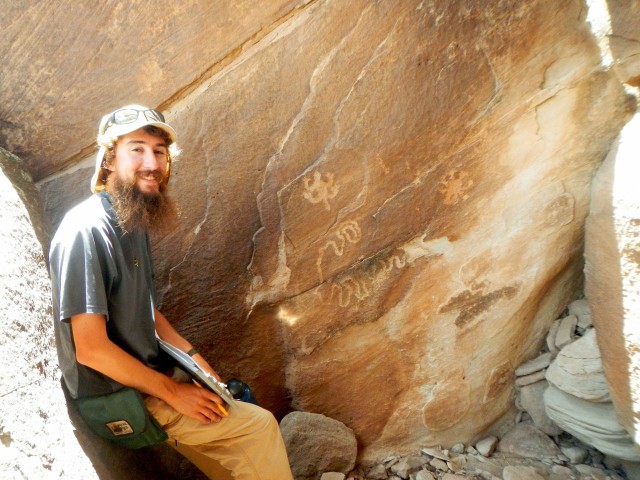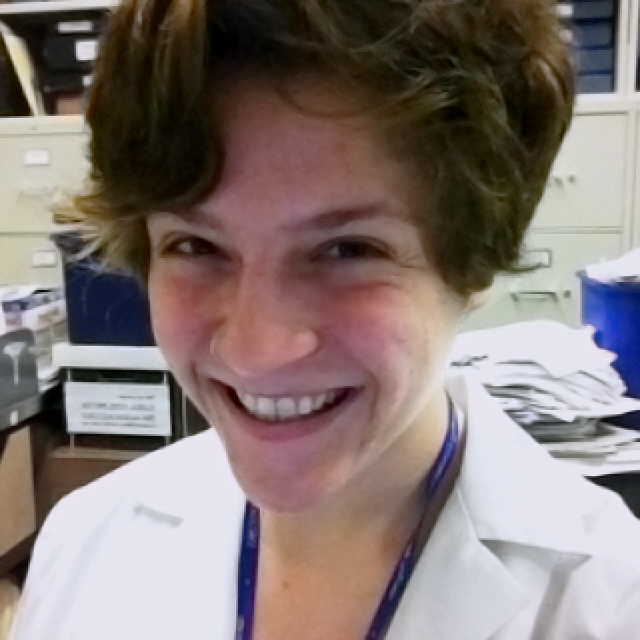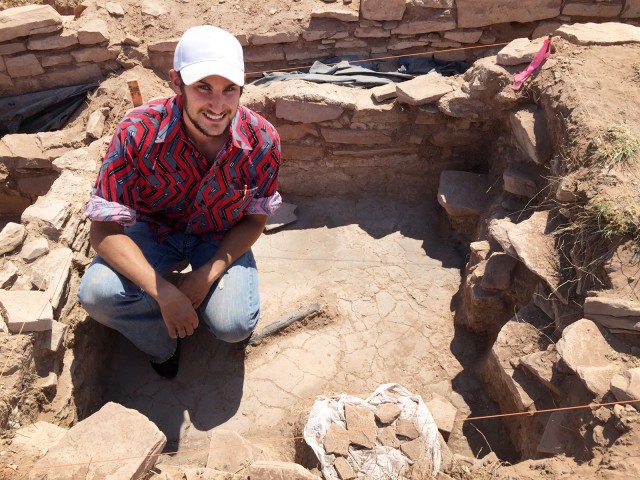- Home
- >
- Preservation Archaeology Blog
- >
- Where Are They Now? Part 1

(February 18, 2016)—This summer’s field school in the Upper Gila area of southwest New Mexico will mark the fifth year of our successful partnership with the University of Arizona (UA) to offer archaeological field training as a college-level course through the UA School of Anthropology. As applications from this year’s prospective students arrive (priority consideration due date: March 18, 2016), I can’t help but think of some of the other people I first encountered “on paper” and eventually got to know in real life.
I’ve been involved in teaching field schools since 1999, and one of the things I enjoy most about it is getting to know students who go on to do a variety of interesting things. Many former students became archaeologists and now work in cultural resource management firms, government agencies, or academic positions in anthropology. Others have gone on to careers as diverse as climate research scientist, birth doula, lawyer, and fierce roller derby competitor by night/ equally fierce librarian by day.
This seemed like a good time to catch up with a few of our more recent alumni and hear what they’ve been up to. This two-part “where are they now?” series shows a few of the interesting anthropological paths our recent alumni are taking.
Maxwell Forton, SUNY Binghamton (2014 field season)
I am now in my second year at Binghamton University and am working this semester with my advisor, Dr. Ruth Van Dyke, to complete my thesis on the trade of Chuskan ceramics and lithics into Chaco Canyon. This past summer I reunited with fellow Mule Creek alumnus Alex Covert to work as an archaeological intern at Petrified Forest National Park. My field school archaeological survey experience learning how to use a TRIMBLE system and map sites helped prepare me for the vast survey project we were engaged in. Last April I presented a poster at the Society for American Archaeology annual meeting on Kayenta-style ground stone tools in the southern Southwest, a project that began as a community presentation during the summer field school! Since then, I have presented a poster at the 2015 Pecos Conference on the rock art of a Chacoan site in the Petrified Forest backcountry, and a paper at the 2016 Society for Historical Archaeology annual meeting on the clothing buttons of an Alsatian immigrant site in Castroville, Texas. I still remember the field school excavations fondly, along with the amazing teachers who sealed my devotion to Southwest archaeology, and the many friendships I made.

Izzy Starr, Wellesley College (2014 field season)
Although there’s no experience quite like excavation, I’ve found a few great ways to expand upon the knowledge I gained as a member of the Preservation Archaeology field school. I was able to build upon the research I did on human iconography on Mimbres pottery during the public outreach aspect of the field season and present my research alongside many of my field school friends at the 80th Annual Meeting of the Society for American Archaeology last April. I really enjoyed the research and database aspects of the project and have since gone on to work with databases during my internships with the Department of Physical Anthropology at the Smithsonian Institution National Museum of Natural History this past summer and the Repatriation Department at the Harvard Peabody Museum of Archaeology and Ethnology this semester. I’m currently working on my senior honors thesis in anthropology, which uses historical, archival, and forensic perspectives to investigate the Wellesley College human skeletal anatomy teaching collection and understand how the composition of individuals’ age, sex, and ancestral background compares with and exists in relation to other skeletal anatomy teaching collections of the early 20th century. As a second-semester senior at Wellesley, I’m still in the process of figuring out exactly what the “what comes next” part of my post-grad life will be. However, as I have fallen further down the rabbit hole of bioarchaeology, it’s safe to say that I can’t possibly imagine a path that doesn’t involve anthropology in one way or another. I hope to continue improving my osteology and excavation skill sets, and to do more work with archaeology and repatriation before pursuing graduate school in bioarchaeology and anthropological genomics. Not only was the Preservation Archaeology field school an amazing, fascinating, and fun experience, but it also provided me with a handy tool-belt of skills and a wonderful network of friends, peers, and mentors.

Riley Duke, University of Arizona (2014 field season)
I attended the Preservation Archaeology field school in the summer of 2014. Thanks to the artifact analysis skills I learned in the field, I was hired after the field school at the Arizona State Museum’s Homol’ovi Lab and worked under E. Charles Adams and Richard Lange as a student laboratory assistant. There, I analyzed projectile points and flaked stone debitage from the Rock Art Ranch Field School. I graduated from the University of Arizona in the fall 2015 semester and was then hired at the Arizona State Museum as a curatorial assistant. I now work in the photographic collections, where I take and process photos of archaeological objects from the Grasshopper Field School. The field school was my first introduction to field archaeology, and by being exposed to survey, excavation, and a variety of archaeological materials, I was able to see what aspects of archaeology I was drawn to the most and wanted to pursue in the future. The skills I had learned there were beyond valuable and helped me succeed in both academic and professional settings.

Riley at Rock Art Ranch near Winslow, AZ
Explore the News
Related to This
-
Location Petrified Forest National Park